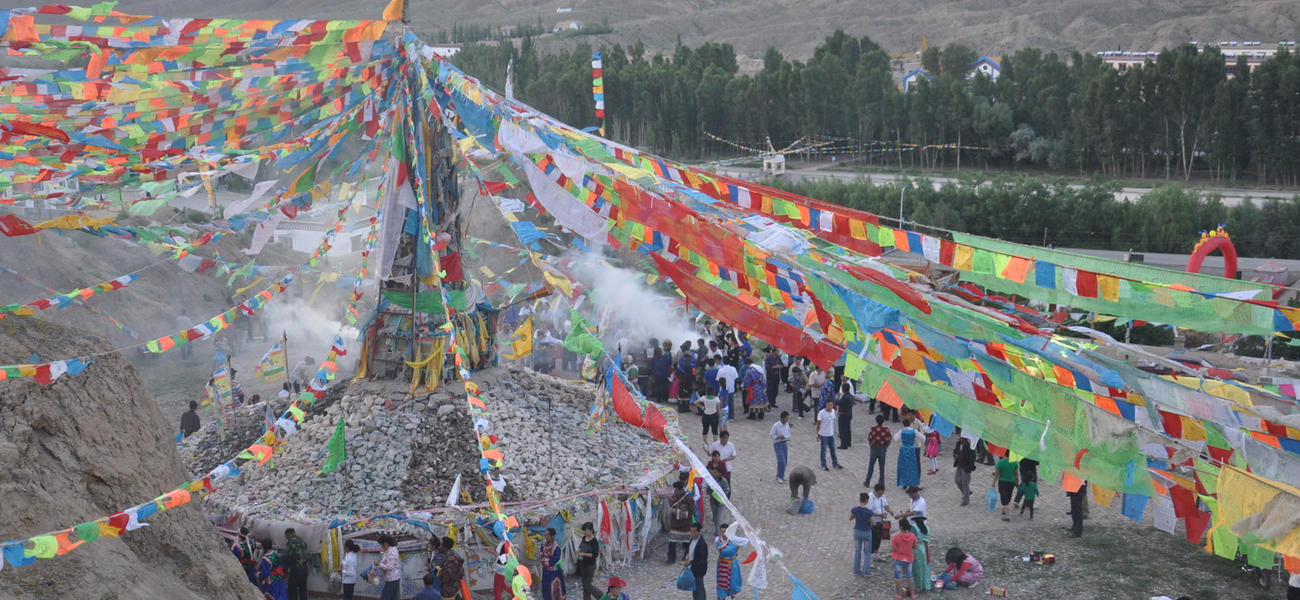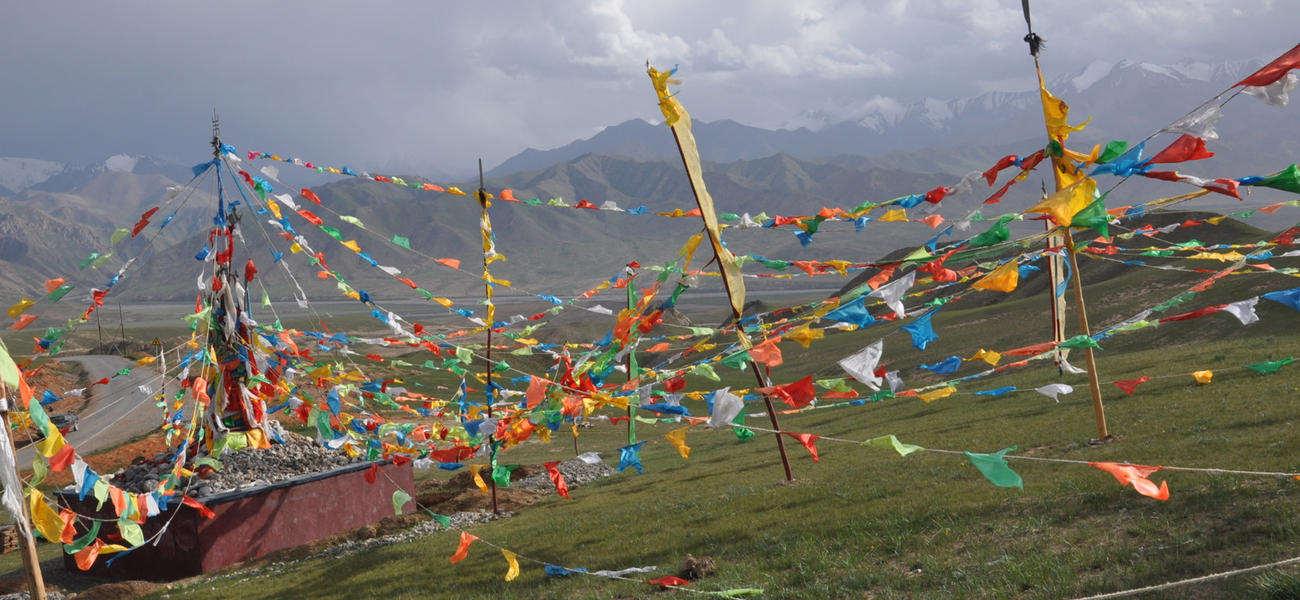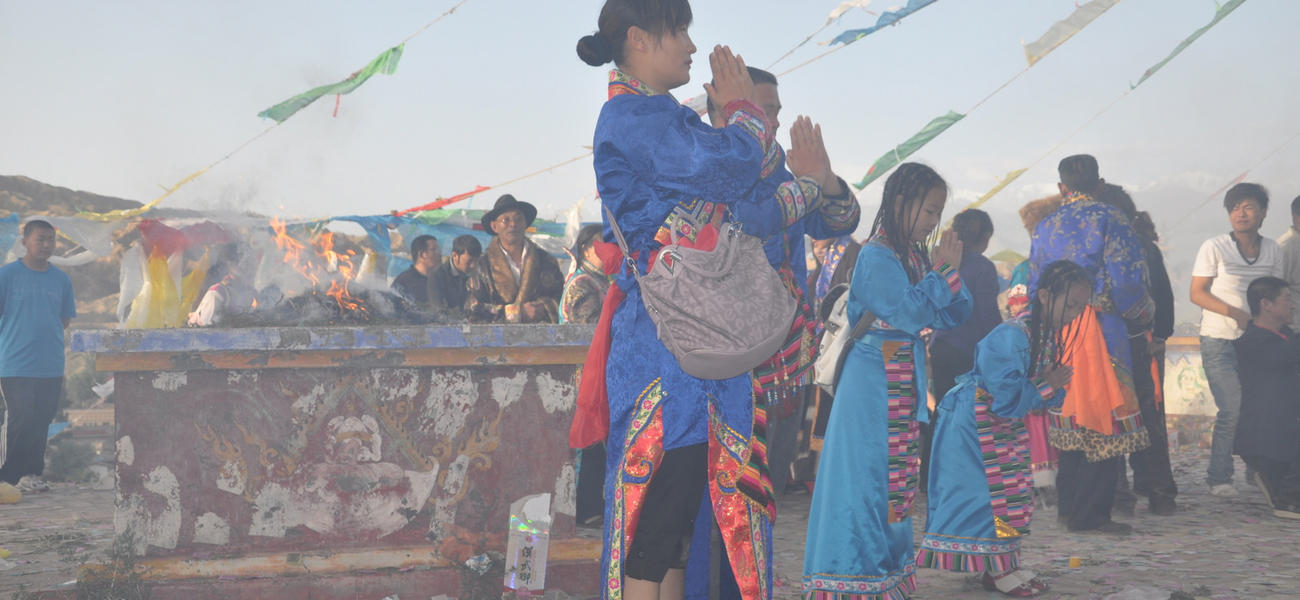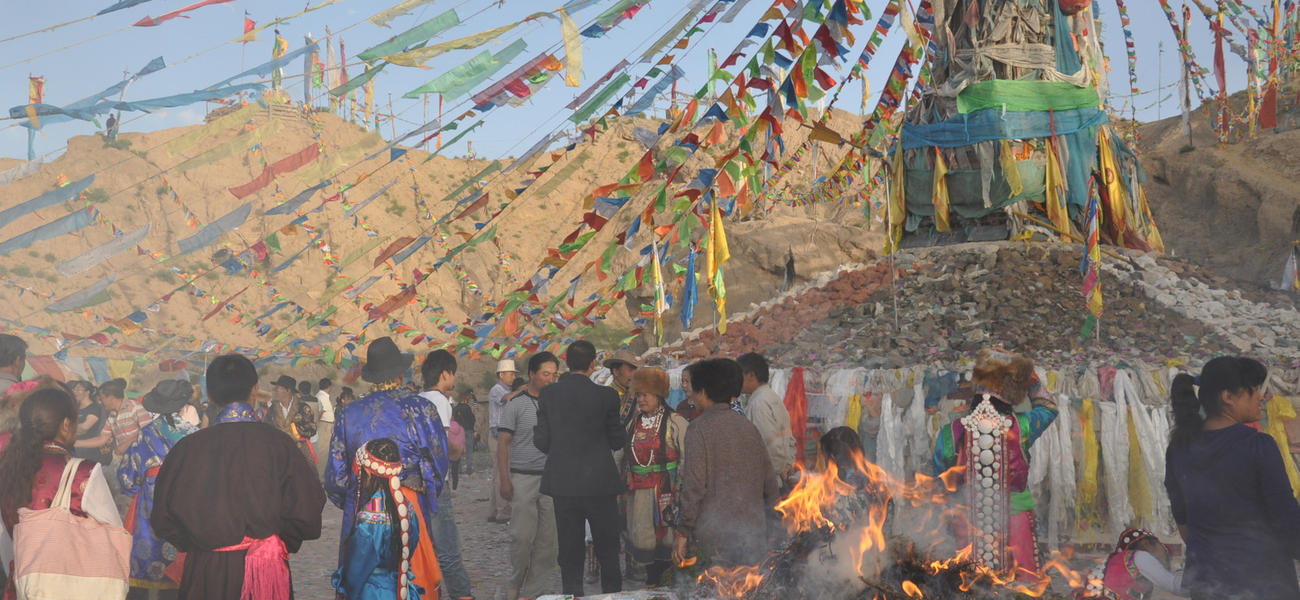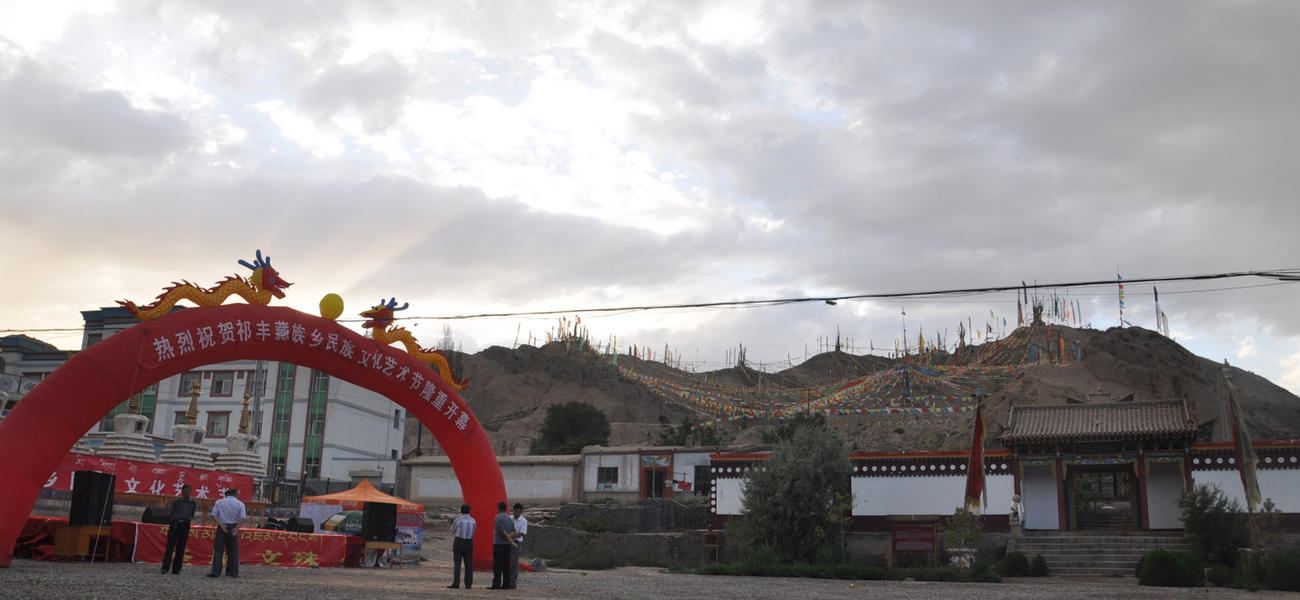The practice of making offerings to the mountain gods is a critical element of Tibetan historical memory and cultural identity. The focus of my doctoral studies in Ethnology at Lanzhou University is the remains of the cultural practice of offering to latse in the remote northeastern reaches of Amdo. Latse are sites of cultural significance, usually along the high peaks that border mountain passes, which are made from a cluster of rocks and bundled branches, forming a wide pole from which prayer flags are strung.
In 2009, I was fortunate enough to receive Trace Foundation's Research Fellowship, which gave me the opportunity to research the latse festivals in Dungnak Tsowa (Qifeng) Township in Sunan Yugur Autonomous County, Gansu Province. The local population is native to the northeastern Treng-la Mountains and the Hexi Corridor in Gansu Province. Dungnak Tsowa is a large township, rich in mineral resources and with a long cultural history. To the south of Dungnak Tsowa lies Treng-la County of Qinghai Province and to the north, the borders of Jiuquan and Jiayuguan, two prefecture-level cities along the old Silk Road. Dungnak Tsowa is home to an ancient temple dedicated to the bodhisattva Manjusri, and the highest peaks of the Treng-la Mountains.
The traditional faith of Dungnak Tibetans is Tibetan Buddhism. In Dungnak Tsowa, the beliefs and practices surrounding sacrificial offerings to latse are similar to those in other Tibetan communities across the plateau. In the last century, however the influence of traditional Tibetan culture has waned with the rising influence of Han culture. Though the daily influence of Tibetan culture has declined dramatically – locals seldom visit the community’s cultural center, the Manjusri temple, and few outside the older generation can speak any Tibetan – the draw of local traditions remains stronger than in other counties in the region, like Wudu, where the latse festivals are no longer commemorated.
In 2010, my research focused on the latse festival on mountain where Dungnak Jamyang, the temple to Manjusri, is located. In Dungnak Tsowa, there is one central latse, with thirteen sub-latse spread throughout the surrounding villages. The main latse is surrounded by thirteen types of minerals and thirteen flags standing for the thirteen villages of Dungnak Tsowa Township. A communal offering to the latse is made every year on the sixth day of the sixth lunar month. Migrant workers return from across the region to join the elderly, women and children who make up the majority of the population in Dungnak Tsowa in celebrating the occasion. As such, the ceremony plays an important role in reconnecting the community.
This community festival is not only a window into the expression of culture amongst Tibetans in Gansu, but also into how history, culture, and tradition are remembered and transmitted in the region. The continuing importance of the festival seems to show how a community facing rapid social and cultural change expresses its dignity and cultural identity.
The latse festival in Dungnak Tsowa is as grand and lively as the Dzamling Chisang, the holiday celebrated on the fifteenth day of the fifth lunar month, which commemorates the defeat and conversion to Buddhism of disruptive local spirits by Guru Rinpoche. During the latse festival, no one can recite prayers to the local mountain gods except the Living Buddha and one monk in the Manjusri temple.
Though most wear western clothing on a daily basis, it is common for the local population to wear Tibetan clothes during the festival. Many families prepare or unpack Tibetan clothes for the festival. As part of the annual celebration, the township government organizes arts displays and sporting activities, including Tibetan art shows and horse racing. The sacrificial offerings to latse and arts festival are complimentary, and could serve as a platform to demonstrate and revive the unique culture of Tibetans in Dungnak Tsowa. Already, Dungnak Tibetans recognize their active participation in the festival as a demonstration of their culture, rather than simply a religious rite.

